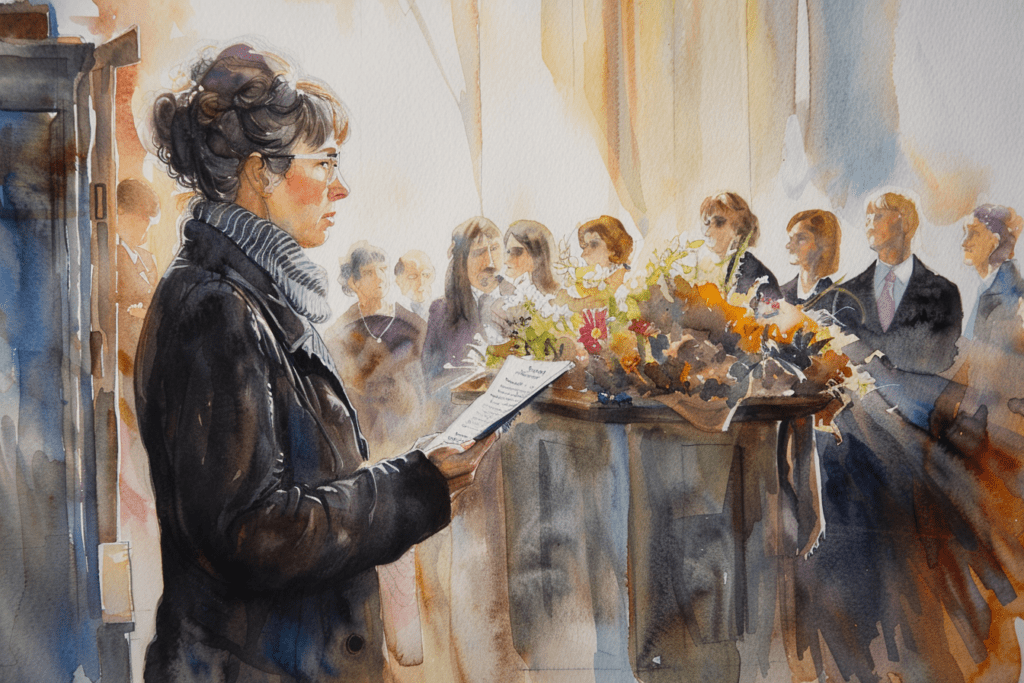
What Is A Funeral Order Of Service & What Should You Include



Introduction

Losing a loved one is a profoundly challenging experience, filled with a mix of emotions and responsibilities. One of the key tasks in this period is organizing a funeral or memorial service that honours the life of the deceased.
A crucial element in this process is creating a funeral order of service, a document that serves as a guide through the ceremony.
This article explains the significance of a funeral order of service and details the essential components to include, ensuring the service is respectful, meaningful, and well-organized.
After reading the article please consider our collection of personalised order of service booklets.


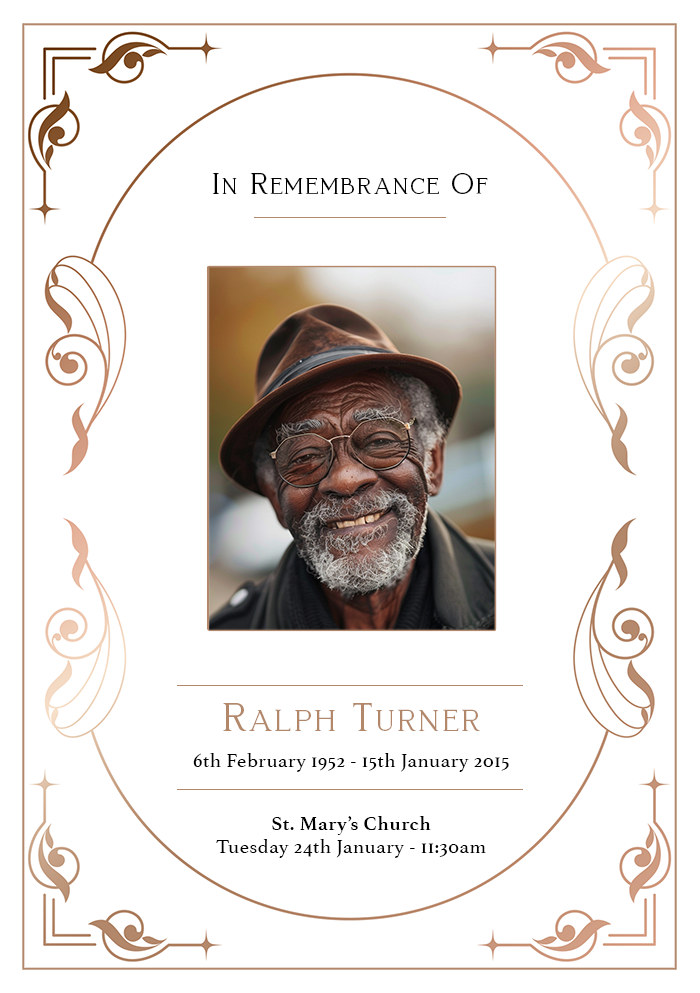

Article Contents
- Understanding The Funeral Order Of Service
- Key Components Of A Funeral Order Of Service
- Additional Considerations
- Conclusion

Understanding the Funeral Order Of Service

A funeral order of service is a detailed program that outlines the sequence of events during a memorial or funeral service. This document provides structure, ensuring that the ceremony proceeds smoothly and that all elements are included.
Beyond its logistical role, the order of service is a keepsake for attendees, helping them follow the ceremony and providing a memento of the occasion. It offers comfort and clarity to grieving family and friends, guiding them through each part of the service.

Key Components Of A Funeral Order Of Service

Cover Page
The cover page is the first element that attendees will see, setting the tone for the entire service. It typically features the deceased’s name, their date of birth and death, and a photograph that captures their spirit.
This page can also include a meaningful quote, a short poem, or a line from a hymn. The cover page not only honours the individual but also provides a visual and emotional introduction to the service.

Welcome Message
A welcome message is an important component, offering a warm and heartfelt greeting to those who have gathered. This message expresses gratitude for their presence and support during this difficult time.
It helps create a sense of community and solidarity among attendees. The welcome message can be simple and sincere, acknowledging the shared loss and the collective effort to honour the deceased’s memory.
Order of Events
The order of events is a critical section that outlines the sequence of the ceremony. It typically includes the following:
- Opening remarks or a welcome address.
- Hymns or musical selections.
- Readings from religious texts, poetry, or literature.
- Tributes or personal reflections from family and friends.
- The eulogy.
- Additional music or hymns.
- Closing remarks or prayers.
By providing a clear and detailed order of events, this section ensures that attendees know what to expect and can follow along easily. It also helps the ceremony flow smoothly and without confusion.
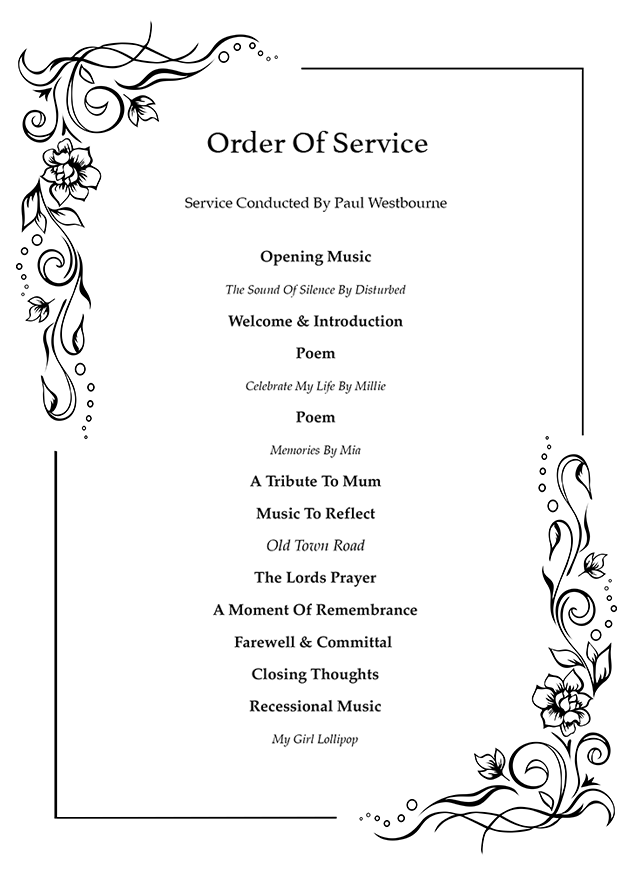
Hymns and Songs
Music plays a vital role in a funeral service, offering solace and evoking powerful emotions. Including hymns and songs that were meaningful to the deceased or that provide comfort to the mourners can significantly enhance the service.
It’s important to choose pieces that reflect the personality and preferences of the deceased, whether they are traditional hymns, contemporary songs, or instrumental pieces. Including the lyrics or titles in the order of service allows attendees to participate more fully.
Readings and Tributes
Readings and tributes provide an opportunity for family and friends to share their memories and feelings. These can include passages from religious texts, poems, or personal anecdotes that highlight the deceased’s life and character.
Choosing readings that resonate with the attendees and reflect the beliefs and values of the deceased can add depth and meaning to the service. Tributes, in particular, offer a personal touch, allowing loved ones to express their grief and celebrate the life of the deceased in their own words.

For examples of quotes for an order of service booklet please see our article – Inspirational Quotes For A Funeral Order Of Service
Eulogy
The eulogy is a central and poignant part of the funeral service, offering a comprehensive tribute to the deceased’s life. Delivered by a family member, friend, or clergy, the eulogy reflects on the person’s character, achievements, and the impact they had on others.
It’s an opportunity to share stories, highlight significant moments, and paint a picture of the deceased’s personality and legacy. Crafting a sincere and heartfelt eulogy requires thought and care, ensuring that it honours the deceased and provides comfort to the mourners.
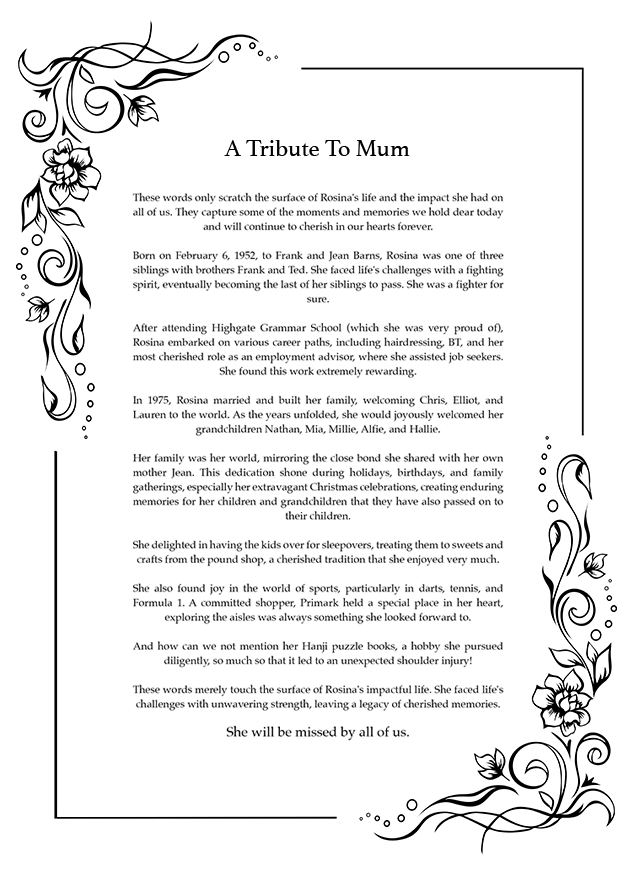
For an in-depth guide on writing a eulogy please see our article – How To Write A Eulogy For A Funeral.

Additional Considerations

Religious or Cultural Traditions
Incorporating religious or cultural traditions into the service is essential for honouring the deceased’s beliefs and heritage. These traditions can include specific prayers, rituals, or customs that are meaningful to the family and the community.
Respecting and including these elements not only adds authenticity to the service but also provides comfort to those who share the same beliefs.
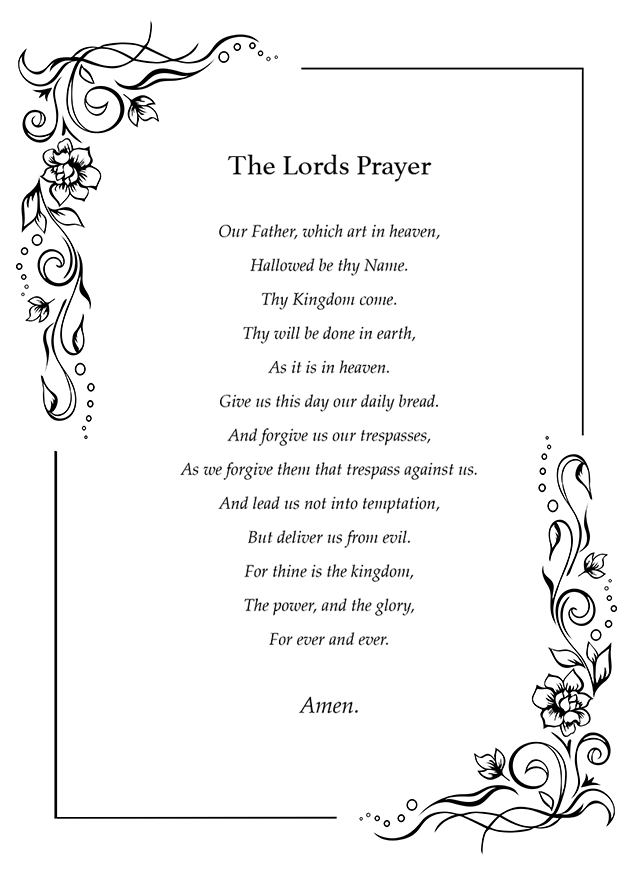
Personalisation
Personalising the funeral order of service can make the ceremony more intimate and reflective of the deceased’s life. This can include adding photos, favourite quotes, or anecdotes that capture their essence.
Personal touches such as these help attendees connect more deeply with the service and create a lasting tribute that celebrates the individual’s unique personality and life journey.
Practical Information
In addition to the ceremonial elements, the order of service should include practical information to assist attendees. This can encompass directions to the venue, parking details, and contact information for the funeral organizers.
Providing these details ensures that attendees can navigate the logistics of the service easily, reducing stress and allowing them to focus on the commemoration.
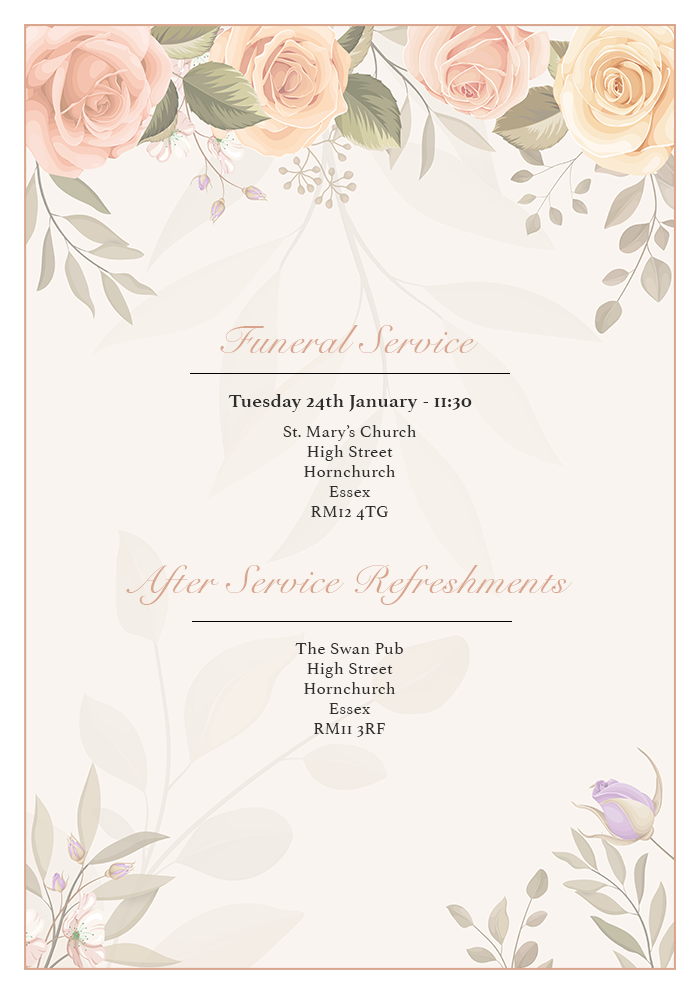
Design And Layout
The design and layout of the funeral order of service are important for both readability and aesthetic appeal. A well-designed program uses clear and legible fonts, organized sections, and thoughtful graphics or images.
The layout should be simple yet elegant, ensuring that the information is easy to follow. A visually appealing design enhances the overall experience and serves as a fitting tribute to the deceased.

Conclusion

Creating a funeral order of service is a meaningful and significant part of honouring a loved one’s life. By including essential components such as a welcome message, order of events, hymns, readings, and tributes, you can ensure that the service is respectful and memorable.
Personalising the program with photos and special touches, while also paying attention to design and practical details, ensures that the ceremony runs smoothly and provides comfort to all who attend.
As you prepare this important document, remember that it is not just a guide, but a lasting tribute to the life and legacy of the one you have lost.

